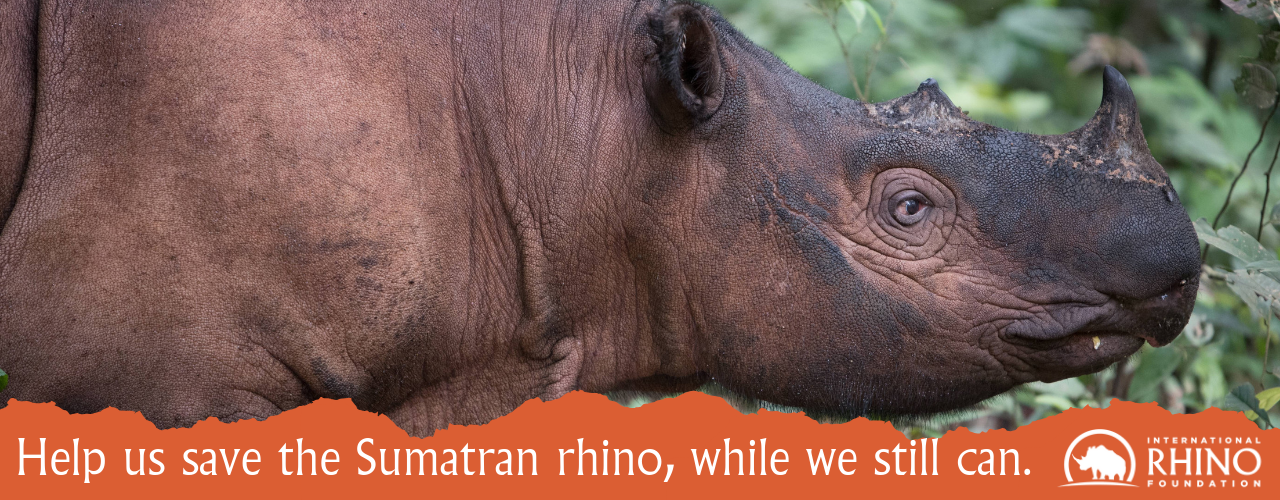The Plan to Save Sumatran Rhinos: Step 1- Survey
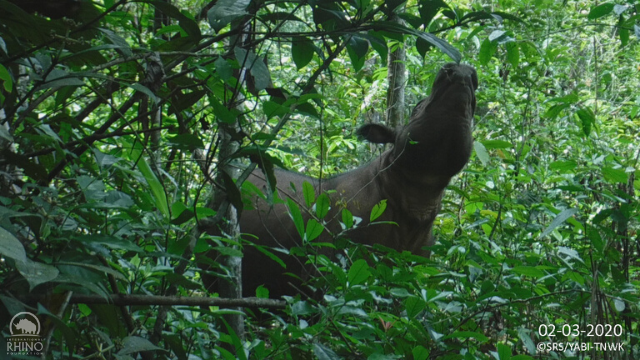
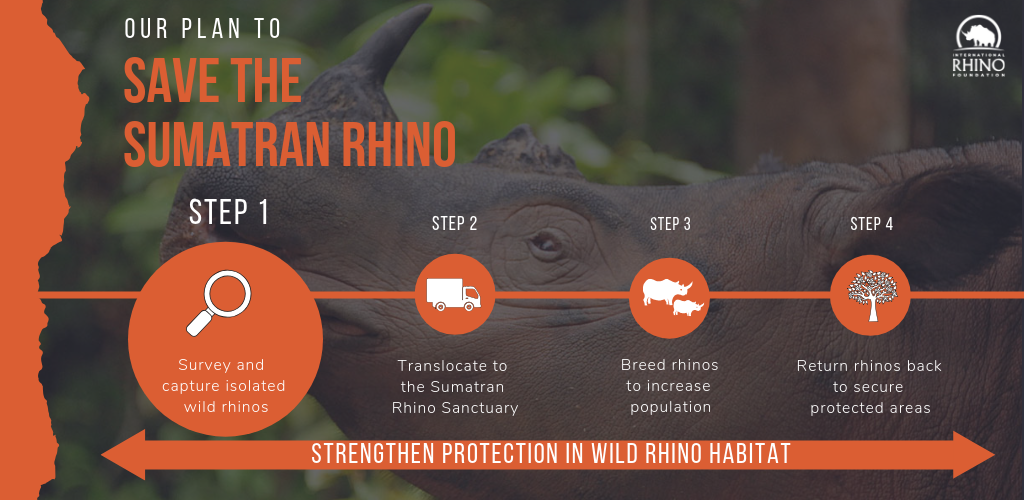
SUMATRAN RHINOS IN CRISIS
With fewer than 80 remaining, Sumatran rhinos are in very real danger of becoming extinct soon if we don’t intervene in a big way. Under the guidance of the government of Indonesia’s emergency action plan, an alliance of international conservation organizations, including IRF, has launched Sumatran Rhino Rescue, a huge, multi-stage, multi-year undertaking to save the Sumatran rhino. We plan to consolidate the widely dispersed, fragmented wild populations into managed breeding facilities, like the Sumatran Rhino Sanctuary. Rhinos will be bred in captivity and eventually reintroduced into protected areas in the wild. In this blog series, we will explain each step of the program in detail and give examples of how past experiences around the world will help guide the implementation of this plan.
SURVEYS
The first step is SURVEY. Normally when we talk about a survey or census, it is in the context of monitoring a population to understand how many animals there are, where they spend their time, and what level of threats they may face. From this information we can determine if a population is safe, healthy, and growing, or if it needs intervention (like translocation to a safer area). This type of monitoring is done 365 days a year for all five rhino species.
- In Zimbabwe, IRF’s partner, the Lowveld Rhino Trust, is able to control poaching losses and achieve population growth for their black and white rhinos by intensively tracking and monitoring them. These surveys can be done from either the air or from the ground, by vehicle or on foot.
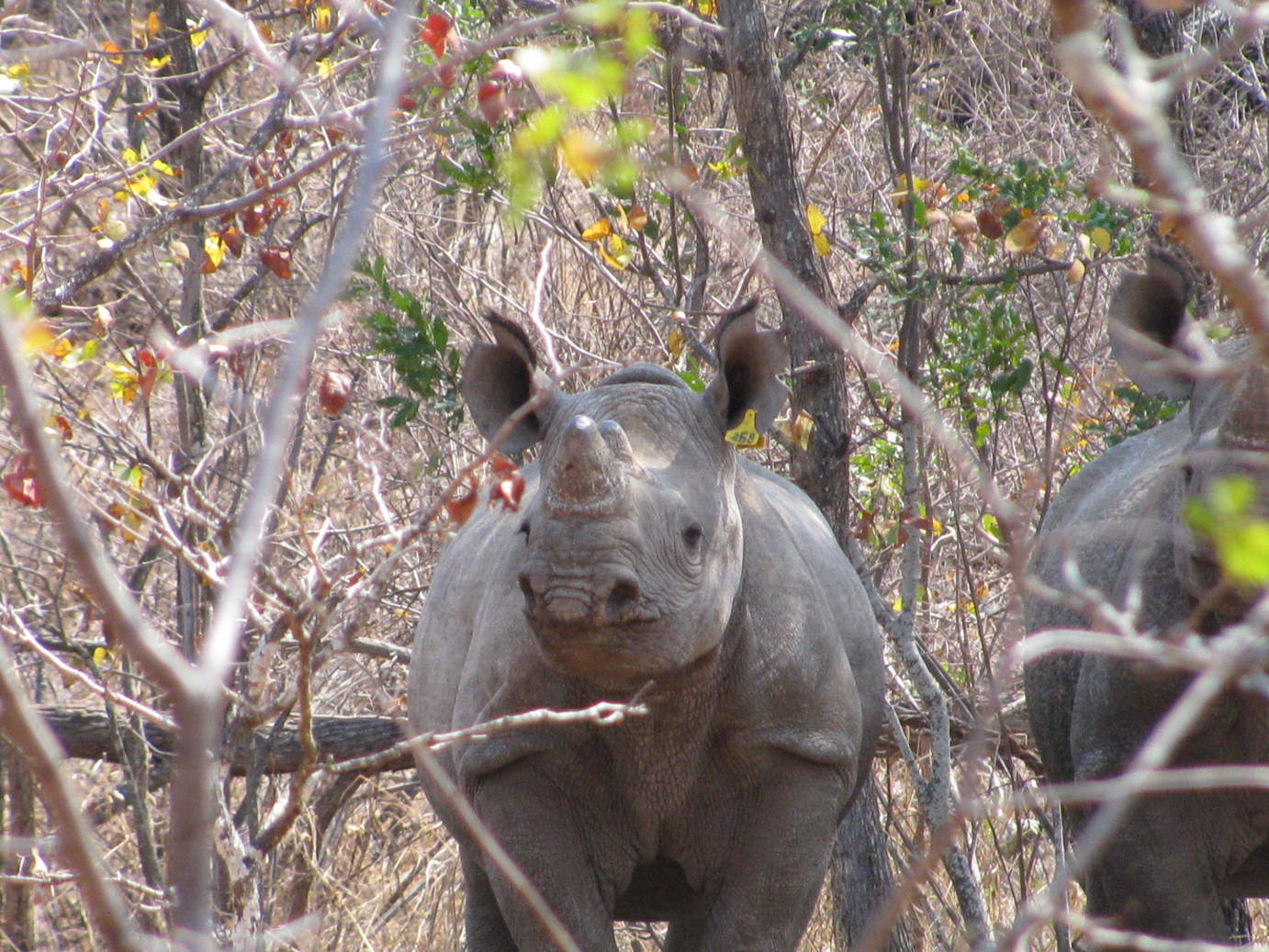
- In India, the thick grasslands and flood-plains that Greater one-horned rhinos prefer can make it difficult to find them, so rangers monitor the rhinos and park activities from tall watchtowers that are built to withstand the flooding that is common during the rainy season. Kaziranga National Park conducts a full-count census every three years — the park is divided into 74 sections, and it takes 300 people, 40 elephants, and 17 off-road vehicles to complete the census.
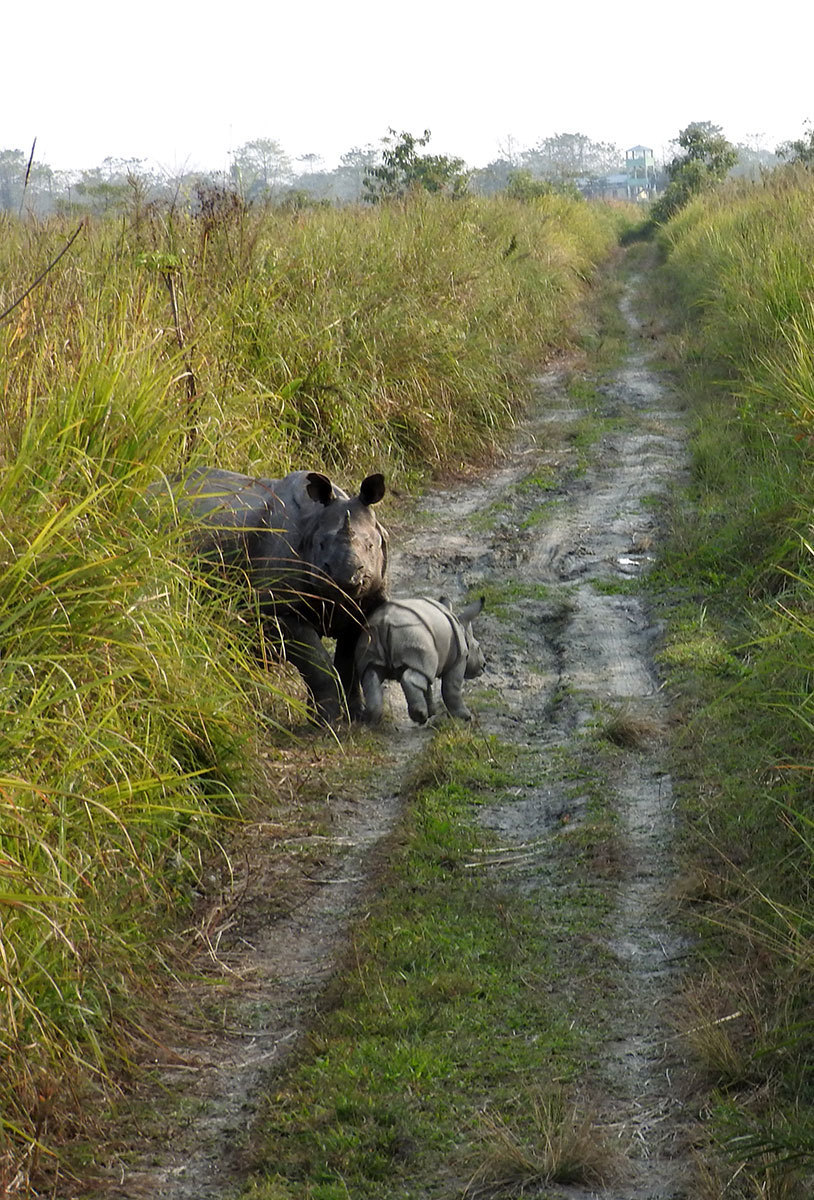
- In Indonesia, due to the dense jungle habitat and elusive nature of its species, Sumatran and Javan rhinos are mostly monitored by camera trap. Rhino Protection Units (RPUs) trek through the jungle to look for signs that rhinos were in the area but an actual sighting is rare — some RPUs go years without ever seeing a rhino in person! The signs they look for — footprints, a fresh wallow, and the Sumatran rhino’s signature twisting of the branches it feeds off of — are used to determine where to place camera traps so that we can gather more information about the rhinos living in that area.
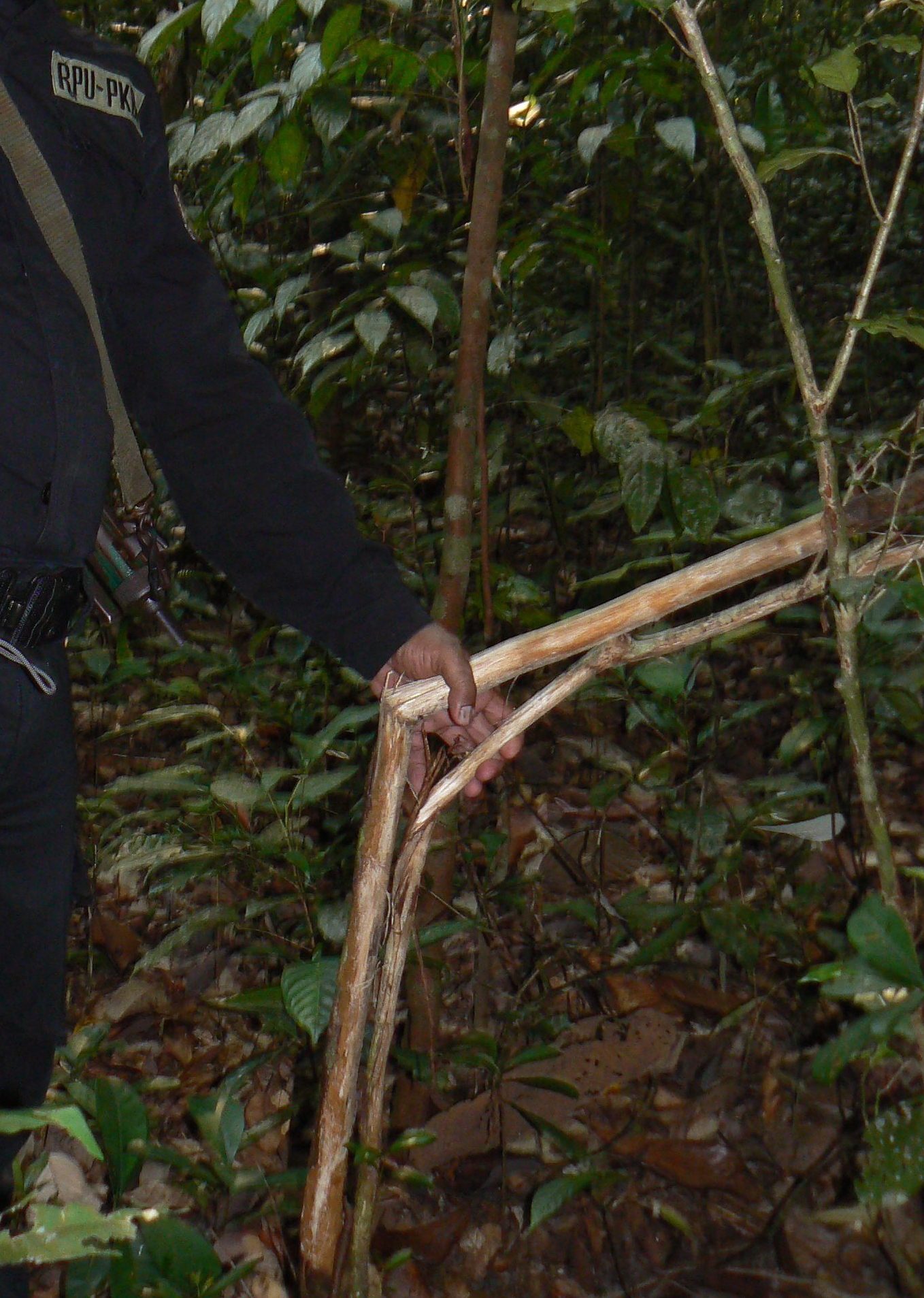
Surveys for the Sumatran Rhino Rescue
Under the Sumatran Rhino Rescue program, the goal of surveying is much more specific — we need to gather information on individual rhinos to prepare for eventual capture and translocation. Pit traps are used to capture Sumatran rhinos — stay tuned for the next post that details how and why this method is used. Even though this is the safest method for the rhino, thorough surveying and planning is essential to mitigating the inherent risks associated with moving large animals.
RPUs and researchers must use their years of experience to determine the best place to put camera traps which are set to start recording video when motion is detected. The videos are then reviewed to confirm if there are Sumatran rhinos in the area, how many there may be, and whether any of the adults have calves with them. Once the location of the rhinos are confirmed, specialists assess the terrain of the area to determine the most effective and safest places to build one or several pit traps, while also considering exactly how the rhino will eventually be extracted from the location. The hilly, jungle terrain in Sumatra can make it very difficult to access the rhino habitat with vehicles, which are necessary to move the crated rhinos, so this needs to be considered as well. All of the logistics — from the people who will be involved, to preparing the necessary equipment, to developing transport routes and contingency plans — have to be decided before any digging even occurs.
JOIN US
Stay tuned later this week for the next post which will cover the CAPTURE process, explaining what pit traps are and why they are the best method to use for Sumatran rhinos.
The Sumatran Rhino Rescue will be a long and difficult process but we are committed to saving this species. Sumatran rhinos have been on Earth longer than any other rhino species but are dangerously close to extinction and need our help now more than ever.
